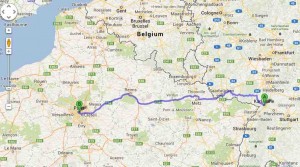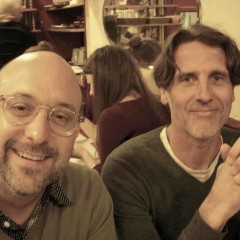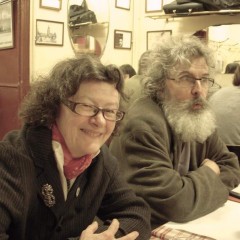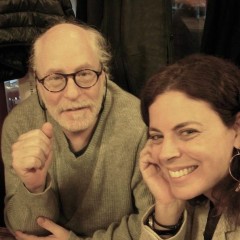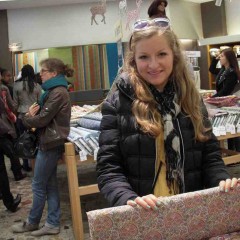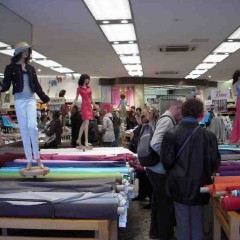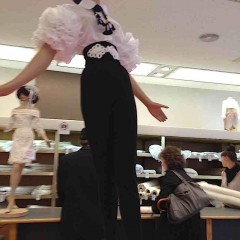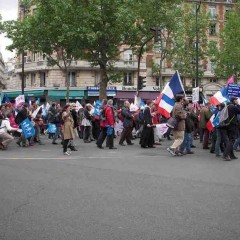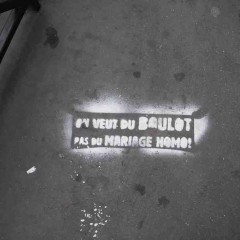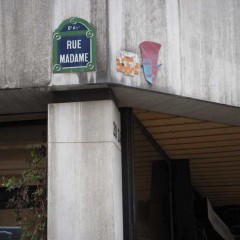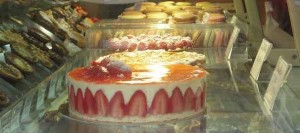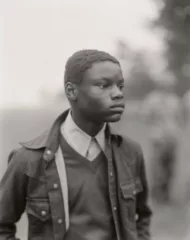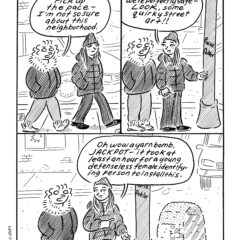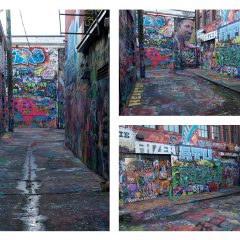We arrived in Paris by TGV train from Karlsruhe on May 24, swept along at top speed of 317 KM/hr (196.975 Miles/hr). To drive the 532 KM (329.9 Miles) would take around five hours according to Google directions. The fast train did it in three.
The Angel of the Odd: Dark Romanticism from Goya to Max Ernst at the M’O
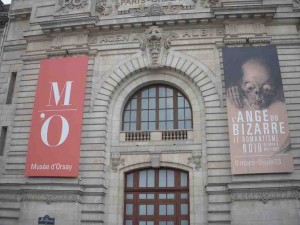
We were all excited to go to the Musee d”Orsay (M’O is their cute brand name) for the show of bizarre imagery. Goya is always a big draw, and who can resist dark romanticism? Steve, Stella and I met up with Max Mulhern, one of artblog‘s Paris correspondents and the creative spirit behind AquaDice, who had suggested the outing. It is always great to see Max and to talk art with him. Insightful, funny, Max is a great companion when looking at art.
The enormous show, which closes June 23, is curated by Dr. Felix Kramer, whose joint appointment at the M’O and at the Stadel Museum in Frankfurt explains the heavy presence of German art, a lot of it on loan from the Stadel. There are paintings galore, prints, sculpture, decorative furniture, photography and, happily, film clips from some famous Hollywood and German Gothic classics like Murnau’s Nosfaratu, Hitchcock’s Rebecca, Frankenstein and more. The movie soundtracks are all highly emotional and suggestive and their melodies waft into the adjoining galleries like a siren song. (See Rebecca on YouTube–the whole thing!)
The museum’s promotions department definitely had some fun with the show – the 2-minute gothic horror promo video they put together is so corny it’s darling.
Highpoints include William Blake’s “The Great Red Dragon and the Woman Clothed with the Sun” a watercolor and graphite piece from 1803-1805. Being unfamiliar withBlake’s non-religious imagery this secular image struck Max and me as newsworthy, a piece that might have inspired the alien creatures in the Alien movies.
The show’s wall cards give broad societal context for the rise of Gothic imagery in art. For just one example, Gothic novels first sprang to life and flourished in England in 18th Century, with Horace Walpole cited as the first to write one — The Castle of Otranto. By coincidence I had just started reading Jane Eyre on the trip not really considering whether it was a Gothic novel, but by gum it sure is! It has all the requisite plot elements — innocent heroine, mysterious dark house with locked doors, spooky people, and a distant although fascinating love interest; a dark revelation; a near-fatal journey by the heroine; rescue, more adventure and return to her true love, with ending tinged in sadness.
While damsels in distress swooning as they are assaulted by goblins, Satan, vampires and others make up a hefty portion of the exhibition, there is another side of this Romantic Gothic impulse that was featured in the show. Apparently around this time women began to be demonized in painted imagery. Women are portrayed as hideous — witches, harpies, Medusa. And in one really bizarre group of works, which has the footprint of De Sade all over it, some early photographs show nude females in bondage. I am sorry I didn’t make note of the artist’s name so I could steer you away from him. I guess we all know that this imagery exists, but to see it identified as a kind of “movement” in art from a definable period is disturbing.
Meanwhile, no show of grotesque art can be without Goya. And he is represented in depth here, with a set of Caprichos and several paintings, like “Flying Witches,” 1797-1798.
The weakest part of the chronologically-ordered show is the end section from World War I to 1940, in which Surrealism is posited as Gothic, something that seems questionable in the context of the rest of the show. Dali’s works may be weird and dreamy but they lack the element of shock and horror possessed by most of the other works here.
This end section also includes some cheerful works by Miro and a couple elegant abstracts by Klee, always great to see, but Max and I didn’t buy them as fitting in this show either. On the other hand, Hans Bellmer is included and his doll imagery, as grotesque and troubling as anything in the show, fits perfectly. Magritte also fits the show for his eerie (Hitchcockian?) sense of the the suspenseful moment, as does Max Ernst, with his brooding landscapes that are both Romantic and Gothic and post-apocalyptic.
I was reminded of a show I’d seen in 2004 at the Neue Gallery, Comic Grotesque: Wit and Mockery in German Art, 1870-1940. That show had some of the same artists in it (Paul Klee, Arnold Bocklin, both of them with arguably more relevant gothic works). No one show can be truly comprehensive on this subject and all exhibits are dependent on what work is available. The two shows were both excellent, and it’s always good to be reminded of art’s devilish side.
Quick outtakes
Table talk by artblog writers at Le Petit Saint-Benoit.
We had a fantastic dinner in this little restaurant, where our waitress was a little surly and the place was packed. The food was good and in attendance –Roberta, Max Mulhern, Myriem Mulhern, Matthew Rose, Matty Hart. Matty is a former Philadelphian and friend of artblog. He founded Spiral-Q and worked with Solutions for Progress, Now he’s working on a new socially-conscious consulting business.)
Aquaduc Lutece
In the Parc Montsouris section, where our hotel was. More on Aquaduc Lutece here.
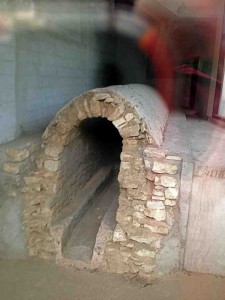
Rooftops from our hotel window

Shopping for fabric at Reine
Seen on the street
Fields of yellow
On the train between Karlsruhe and Paris we passed fields of gorgeous yellow flowers. We didn’t know what we were seeing but apparently it was fields of rapeseed used for making canola oil. Germany and France are among the top 5 producers of rapeseed (China, Canada, India produce more), says Wikipedia.
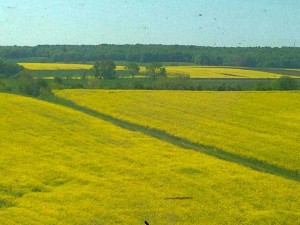
We didn’t have a slice but it looked so perfect and perfectly beautiful I had to take a picture.


